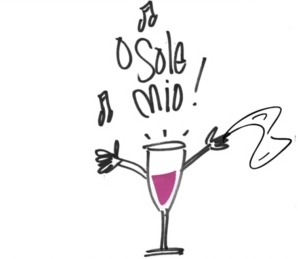
Taste wine for a living and you may find that at some point around the umpteenth bottle, the notes you take begin to look a little repetitive. That such a thing should happen is not really surprising, since wines from similar places with similar profiles will, after accounting for vintage variation, have much in common.
As a professional taster, your job is to concentrate sufficiently to give every wine a fair shake, drawing on memory and experience to make appropriate judgments about quality, character and drinkability. This means paying attention to things like body, fruit, acidity, and texture as individual elements, while at the same time attending to the extent to which these combine to produce a pleasing and engaging whole — a wine you can recommend with confidence and enthusiasm.
This process may be short-circuited, however, when the wine under consideration takes it into its head to do something wonderful and unexpected: It breaks into song. Not literally, of course, but I simply don’t have a better way of describing how some wines abandon their usual spoken prose and burst out into melody, lyricism and just plain joy.
I can’t explain how it is that certain wines have this talent. I only know that the reason the analogy works is that their appeal seems to circumvent any analytic screens a taster may have, and instead makes a beeline for a some more primal, emotive, tender region, a place where analysis seems superfluous and criticism beside the point.
It’s even more curious that this is an experience that one typically does not encounter with wines of pedigree or those with a claim to elite status. Rather the opposite seems to be the case. As an example of this, hear the audience reaction when, after a whole program of heavy-duty arias from the classic operatic repertoire, the great Luciano Pavarotti breaks into the sentimental Neapolitan favorite O Sole Mio — and brings the house down.
It’s something like that.
